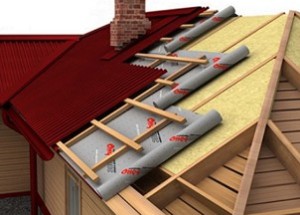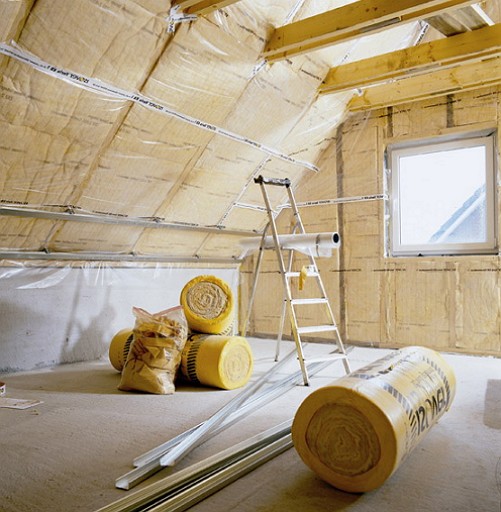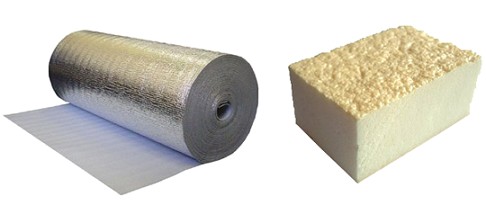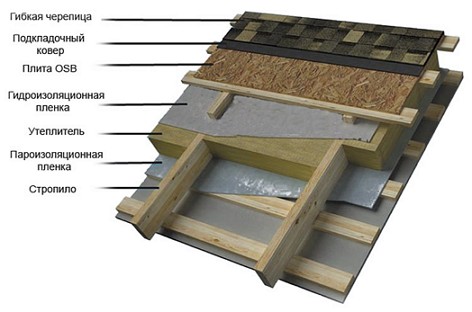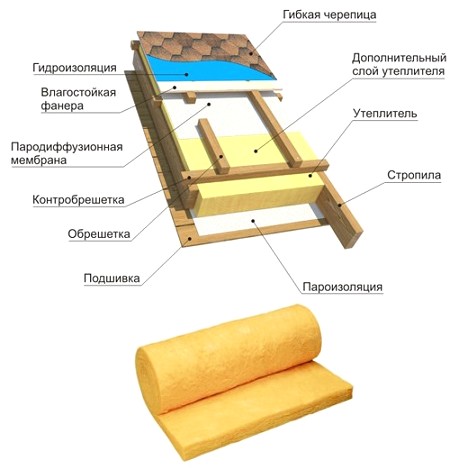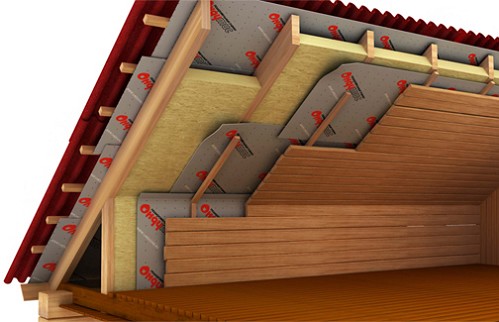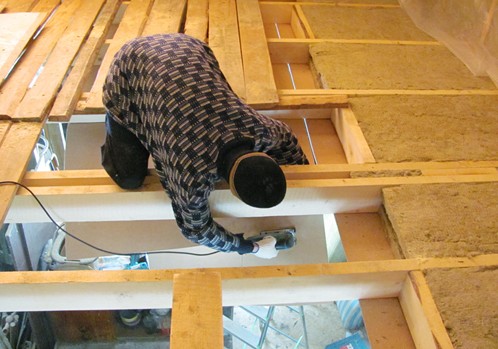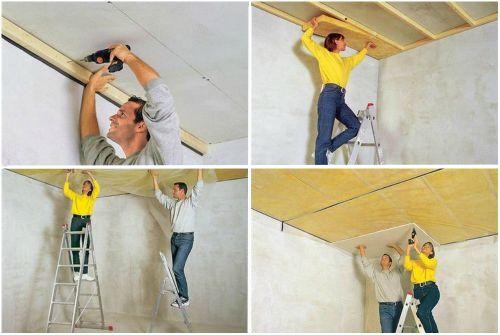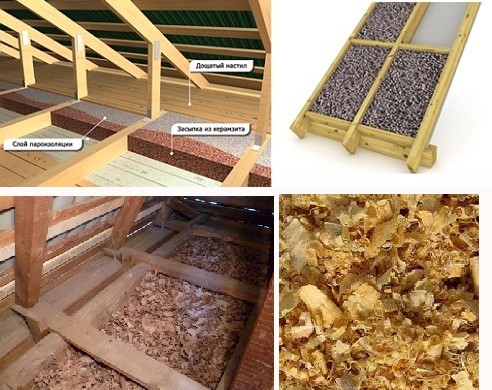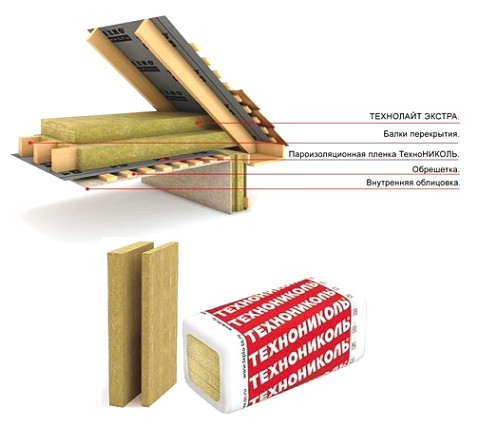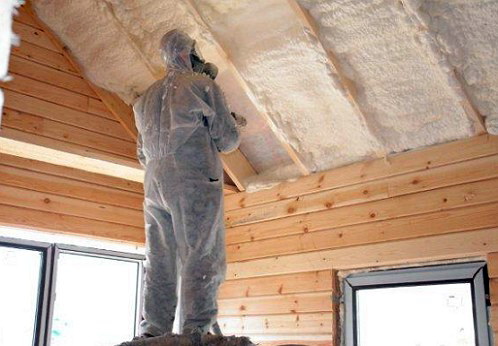The variety of photo thermal insulation materials and recommendations from the manufacturer allow you to insulate the ceiling in a private house with your own hands. The success and result of insulation measures will depend on the choice of material and subsequent installation. Recall that heat insulation measures, according to experts are complex and time-consuming.
Content
Ceiling Insulation: Criteria for Choosing Thermal Insulation
According to statistics, about 65 percent of heat loss falls on the unheated ceiling or the wrong choice of insulation.
Choose the materials and insulate the ceiling is recommended for the following insulation criteria:
- heat-insulating properties, depending on density and hygroscopicity
- accessibility of conducting insulation work with own hand
- fireproof insulation.
For insulation of the ceiling in a house with a cold roof, there are several proven technologies based on the use of roll or plate heaters (expanded polystyrene, mineral wool or polyurethane foam). In addition, the method of liquid spraying of polyurethane foam is topical and attracting attention.
To determine and justify the choice of material for the insulation of the ceiling, it is necessary to study the methods of thermal insulation of the ceiling, namely from the inside and outside.
Ways to insulate the ceiling
The ceiling of the private house is insulated by external means with partial or complete replacement or without replacement of the roofing. Insulation of the ceiling from the inside is made from the side of the under-roof space or attic.
external thermal insulation scheme
Undoubted interest is the scheme of external insulation of the ceiling.
External thermal insulation is schematically represented as layers:
- a film of vapor barrier, mounted on a rafter system
- insulation of a roll or plate
- waterproofing films
- lining roofing carpet
- finish finishing.
Arrangement and installation of external thermal insulation involves the mandatory erection of a counter and a crate. The installation of the layers is divided: a waterproofing film is placed on the slats of the counterbrush. To the crate, mount the edge of the roofing carpet with the top layer of the finishing finish.
In comparison with the external method, for example, the insulating of the ceiling with mineral wool from the inside is more expensive and laborious.
Specialists prefer a method of external insulation. However, the intention to insulate the ceiling from the inside, should be based on materials made in the form of a roll or wide plates. The total thickness of the ceiling insulation with the external method can be up to 15-20 cm.
internal insulation scheme
The device for internal thermal insulation of the ceiling, including the attic room, can be represented in accordance and analogy with the scheme of external insulation with a mirror image of the insulation layers towards the interior. Naturally, it is necessary to insulate the floor and roof space. Moreover, to make the layout and installation of steam, heat and waterproofing is necessary taking into account existing or erected ventshaht.
The technological process begins with the installation of the crate and the layout on the surface of the rafter system of the waterproofing film.
The film is mounted to the wooden structure of the rafters using a construction stapler. Material for insulation is selected taking into account the minimum material density (50 kg / m3). In this scheme, if desired, the insulation of the ceiling with foam is suitable. Further, from the side of the roofing space, the insulation is protected by a layer of waterproofing.
On the side of the house, the insulation is laid with a vapor barrier membrane. It should be noted that with a tight fit of the plate or roll insulation, its width should exceed the width of the rafter's steps by 2 cm.
The final stage of internal insulation of the ceiling of a private house is considered to be a GKL panel or panels.
For more information about the insulation of the ceiling of the house, see here.
Any method of warming is based on the possibility of using thermal insulation materials.
Properties and possibilities of heat-insulating materials
Conditionally heat-insulating materials are divided into categories: vapor-permeable and vapor-proof, which differ in the coefficient of thermal conductivity. Having studied the properties and capabilities of heat insulators, you can proceed to action.
expanded clay, sawdust and slag
More recently, for warming the floor of the attic space of a private house used expanded clay and waste slag. Properties of expanded clay with coef. thermal conductivity λ = 18 W / (mK) and a density of the bulk layer of 800 kg / m3 allowed to insulate the cold attic space quickly.
Heater was simply poured on the attic floor. Similarly, the ceiling was insulated with sawdust. Over time, glass wool, mineral wool and expanded polystyrene were replaced by expanded clay.
polystyrene and mineral wool
Styrofoam and mineral wool have a relatively high coefficient. thermal conductivity, which leaves mineral wool λ = 0.056 W / (mK) at a material density of 100 kg / m3. This type of insulation is distinguished by the simplicity of the installation and, accordingly, the speed of the insulation materials.
liquid heaters and thermal paint
But special interest is caused by liquid heaters, such as liquid polyurethane foam (PPU) and heat-insulating paint with a coefficient of. thermal conductivity of 0.00083- 0.00085 W / mS.
When using liquid heaters, it is not necessary to build gratings and crates.
The process of applying a thermal ink insulation is maximally favorable for manual self-application.
Application technology insulation means the application of pouring, spraying and painting. The foam solution is applied to the supporting structures, reducing and minimizing the loads and costs. The versatility of thermo-insulating paints in cooperation with other heat insulators makes it possible to apply the material from inside and outside the ceiling of a private house.


